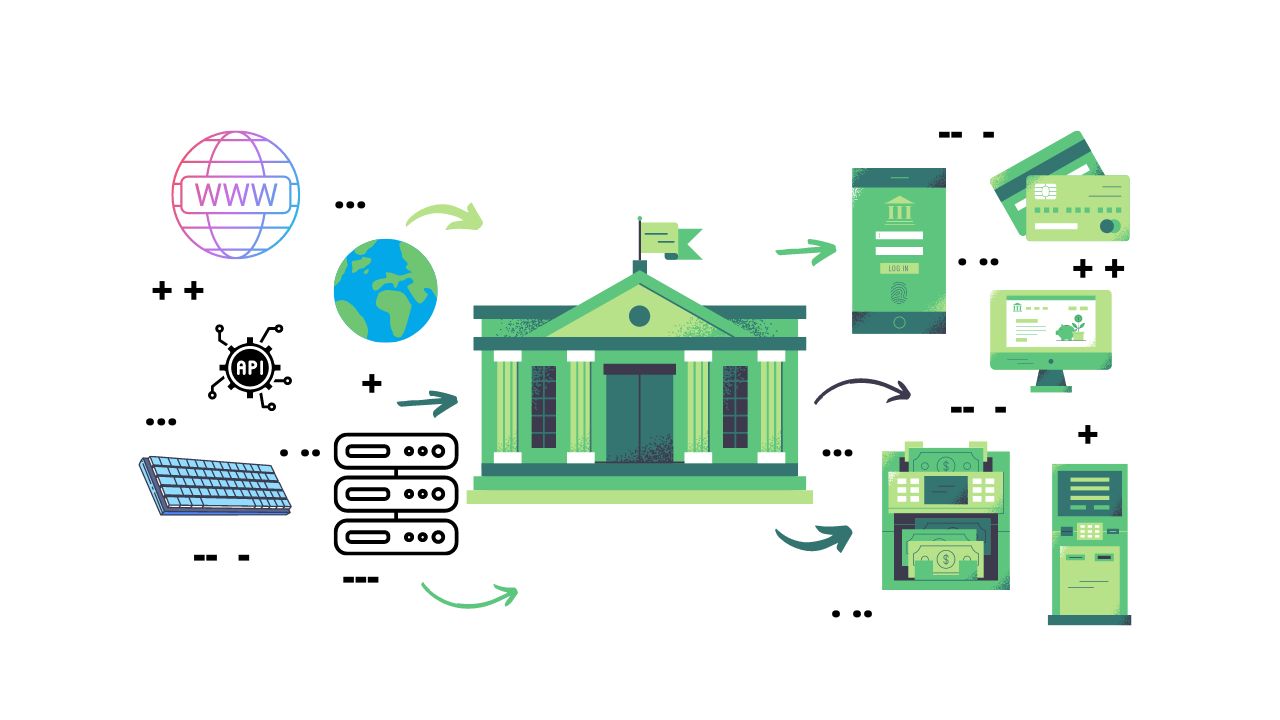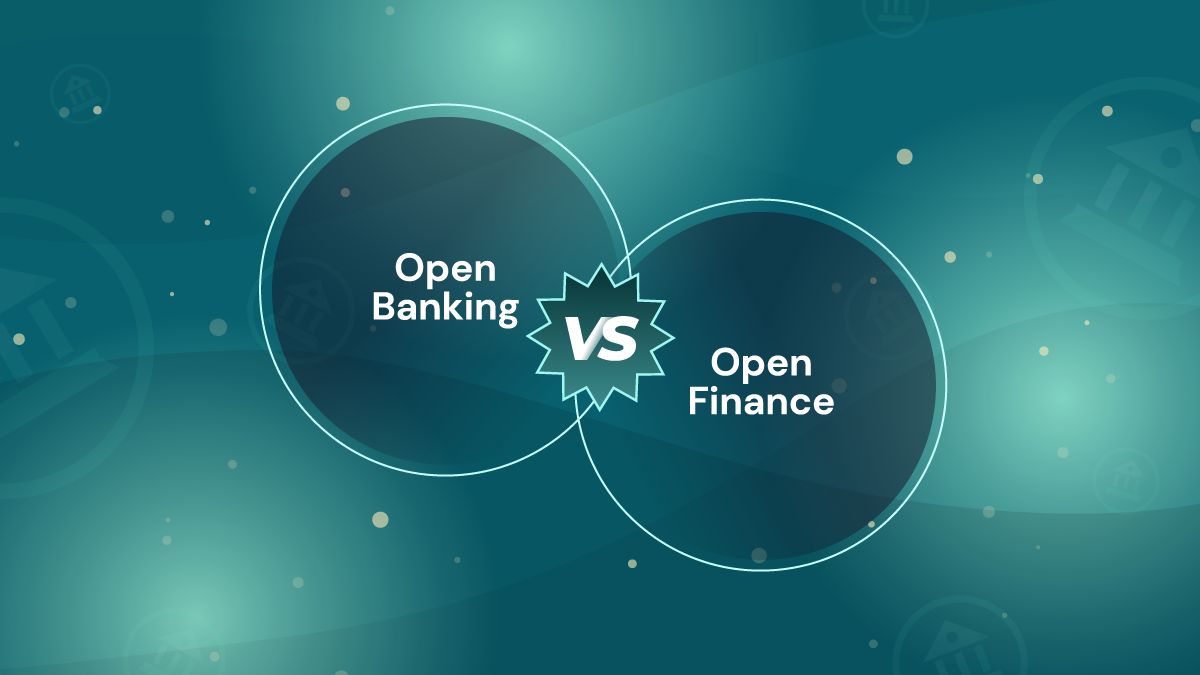Checking Accounts
A checking account is a basic banking product that allows individuals to deposit and withdraw money for everyday transactions. It provides a convenient and secure way to manage personal finances.
With a checking account, account holders typically receive a checkbook and a debit card, allowing them to make payments and withdraw cash. They can also access their account online or through a mobile banking app, providing convenient 24/7 access to their funds.
One of the main benefits of a checking account is the ability to write checks, which can be used to pay bills or make purchases. Unlike cash payments, checks provide a record of transaction details, making it easier to track expenses and maintain financial records.
In addition to check-writing capabilities, checking accounts often offer features such as direct deposit, which allows recurring payments, such as salaries or benefits, to be automatically deposited into the account. This eliminates the need to physically deposit a paycheck or wait for it to clear.
Many financial institutions also provide online bill payment services, enabling customers to easily manage and pay their bills electronically. This feature saves time and effort by eliminating the need for writing checks and sending them through the mail.
Furthermore, checking accounts may offer overdraft protection, which helps account holders avoid insufficient fund fees by linking their account to a savings account or a line of credit. If the account balance is too low to cover a transaction, the funds can be automatically transferred from the linked account to cover the shortfall.
Some checking accounts may have minimum balance requirements or monthly service fees. However, many banks offer fee-free checking accounts or waive the fees if certain conditions are met, such as maintaining a minimum balance or setting up direct deposit.
In summary, checking accounts are essential tools for managing day-to-day finances. They provide easy access to funds, convenient payment options, and various features to simplify financial transactions.
Savings Accounts
A savings account is a type of bank account that allows individuals to save money while earning interest on their deposits. It is designed to help individuals set aside funds for specific goals or emergencies.
One of the key benefits of a savings account is the ability to earn interest on the deposited funds. This interest is typically calculated daily and paid monthly or quarterly. While the interest rates offered by savings accounts may not be as high as other investments, such as stocks or bonds, they still provide a safe and reliable way to grow savings over time.
Savings accounts often have lower minimum balance requirements compared to other types of accounts, making them accessible to a wide range of individuals. They also typically offer flexibility in terms of deposit and withdrawal options.
Automatic transfers are a popular feature of savings accounts, allowing individuals to set up regular transfers from their checking account to their savings account. This makes it easier to save consistently without having to actively remember to make deposits.
Some savings accounts also have features such as goal-setting tools, which help account holders track progress towards specific savings targets. These targets can range from short-term goals like a vacation or a new gadget to long-term objectives like buying a house or saving for retirement.
Savings accounts are often used as a financial safety net in case of unexpected expenses or emergencies. Having a dedicated account for savings can provide peace of mind, knowing that there are funds set aside for unforeseen circumstances.
In addition, savings accounts can be a useful tool for teaching financial literacy and responsible money management to children. Many banks offer special savings accounts for minors, which come with educational resources and incentives to encourage saving from an early age.
It’s worth noting that savings accounts are subject to federal regulations that limit the number of withdrawals or transfers that can be made per month. Exceeding these limits may result in fees or restrictions on the account.
To sum up, savings accounts are a valuable financial tool for individuals to save money, earn interest, and work towards specific financial goals. They provide a secure and flexible way to grow savings while offering easy access to funds when needed.
Certificates of Deposit (CDs)
Certificates of Deposit (CDs) are a type of fixed-term deposit offered by banks and credit unions that pay a higher interest rate than regular savings accounts. They are a popular investment option for individuals looking to earn a guaranteed return on their money over a specific period of time.
When opening a CD, the account holder agrees to keep the funds deposited for a predetermined period, known as the term. The term can range from a few months to several years, and the longer the term, the higher the interest rate typically offered.
CDs are considered a low-risk investment because they are insured by the Federal Deposit Insurance Corporation (FDIC) or the National Credit Union Administration (NCUA), up to the maximum allowed by law. This means that even if the bank or credit union fails, the account holders are protected and will receive their deposited funds plus any accrued interest.
One of the key advantages of CDs is their fixed interest rate, which remains the same throughout the term of the deposit. This provides certainty and allows account holders to accurately calculate how much interest they will earn over the investment period.
CDs also offer a predictable timeline for accessing the funds. Withdrawals before the maturity date may be subject to penalties, such as forfeiting a portion of the interest earned or paying a fee. However, once the CD matures, the account holder can choose to withdraw the funds or roll them over into a new CD.
Another type of CD is the callable CD, which allows the bank to recall the deposit before the maturity date. Callable CDs generally offer higher interest rates compared to regular CDs as compensation for the added flexibility given to the bank.
CDs can be a suitable investment option for individuals with a specific timeframe in mind for their savings goals, such as saving for a down payment on a house or funding a child’s education. They provide a secure and stable way to grow savings, especially when the stock market is volatile or interest rates are low.
However, it’s important to consider that CDs are not as liquid as other forms of investments or savings accounts. Once the funds are locked in a CD, it may be difficult to access them without incurring penalties before the maturity date.
In summary, Certificates of Deposit (CDs) are fixed-term deposits that offer a higher interest rate than regular savings accounts. They provide a low-risk investment option with a guaranteed return over a specific period of time.
Money Market Accounts
Money Market Accounts (MMAs) are a type of bank account that combines the features of a savings account and a checking account. They offer higher interest rates than regular savings accounts while providing limited check-writing and withdrawal capabilities.
One of the main advantages of money market accounts is the ability to earn higher interest on the deposited funds compared to traditional savings accounts. The interest rates offered by MMAs tend to be higher because the funds are invested in low-risk, short-term securities, such as Treasury bills and certificates of deposit.
Money market accounts generally require a higher minimum balance than regular savings accounts, but they often offer tiered interest rates. This means that the more money you keep in the account, the higher the interest rate you’ll earn.
Unlike traditional savings accounts, money market accounts often come with limited check-writing capabilities. This allows account holders to easily access their funds for day-to-day transactions. However, there may be restrictions on the number of checks or withdrawals that can be made each month.
Money market accounts may also provide account holders with a debit card, making it convenient to access funds at ATMs or make purchases directly from the account balance. Additionally, many financial institutions offer online and mobile banking services for money market accounts, allowing account holders to manage their funds conveniently from anywhere.
It’s important to note that money market accounts are not the same as money market funds, which are mutual funds that invest in short-term, low-risk securities. Money market accounts are insured by the FDIC or NCUA, up to the maximum allowed by law, while money market funds are not federally insured and can potentially lose value.
Money market accounts are an attractive option for individuals who want to earn higher interest on their savings while still having some flexibility to access their funds. They are particularly beneficial for short-term savings goals or emergency funds.
However, it’s essential to consider the fees associated with money market accounts. Some financial institutions may charge monthly maintenance fees or transaction fees if certain conditions, such as maintaining a minimum balance, are not met. Therefore, it’s important to compare different options and select a money market account that offers competitive rates and favorable terms.
In summary, money market accounts provide a balance between higher interest rates and limited check-writing and withdrawal capabilities. They are a suitable choice for individuals who want to earn a competitive return on their savings while maintaining some access to their funds.
Credit Cards
Credit cards are a widely used financial tool that allows individuals to borrow money from a bank or financial institution to make purchases. They offer convenience, flexibility, and numerous benefits for cardholders.
One of the main advantages of credit cards is the ability to make purchases without carrying cash. Cardholders can use their credit cards to pay for goods and services both online and at physical stores, making transactions quick and easy.
Credit cards offer a line of credit, which is a predetermined amount of money that cardholders can spend. This allows individuals to make purchases even if they don’t have the full funds available at the time. However, it’s essential to manage credit card spending responsibly and pay off balances in full each month to avoid accumulating high-interest charges.
Using credit cards wisely can lead to several benefits. Many credit cards offer rewards programs, where cardholders earn points, cashback, or airline miles for every dollar spent. These rewards can be redeemed for various benefits, including travel perks, gift cards, or statement credits.
Credit cards also provide protection against fraudulent transactions. Most card issuers have sophisticated fraud detection systems that monitor for any suspicious activity on a cardholder’s account. In case of unauthorized charges, cardholders are typically only responsible for a minimal amount, if any, as long as they report the fraud promptly.
Furthermore, credit cards offer additional consumer protection benefits. For example, many credit card companies may offer extended warranties on purchases made with the card, as well as purchase protection against theft or damage. These benefits can provide peace of mind when making larger purchases.
It’s important to note that credit cards come with terms and conditions, including interest rates and fees. If balances are not paid in full by the due date, cardholders may be charged high-interest rates on the remaining balance. Late payment fees and other charges can also apply for missed or late payments.
Building a good credit history is another advantage of using credit cards responsibly. By making timely payments and keeping balances low, individuals can establish a positive credit profile, which can be beneficial when applying for loans, mortgages, or other lines of credit in the future.
In summary, credit cards provide a convenient and flexible way to make purchases, earn rewards, and enjoy consumer protection benefits. However, it’s crucial to use credit cards responsibly, pay off balances regularly, and understand the terms and fees associated with the card.
Debit Cards
Debit cards are a popular and widely-used financial tool that allows individuals to access funds directly from their bank account to make purchases or withdraw cash. They offer convenience, security, and several benefits for cardholders.
One of the primary advantages of debit cards is the ability to make electronic payments and transactions without the need for physical cash. Cardholders can use their debit cards at point-of-sale terminals in stores, online merchants, and ATMs to make purchases or access their funds.
Debit cards are linked directly to the cardholder’s bank account, allowing for real-time transactions. When a purchase is made using a debit card, the funds are immediately withdrawn from the linked account. This eliminates the need to carry large amounts of cash or write checks and provides a convenient way to manage personal finances.
In addition to making purchases, debit cards can also be used to withdraw cash from ATMs. This allows cardholders to access their funds 24/7, making it easy to obtain cash for everyday expenses or emergencies.
Debit cards offer a level of security for cardholders. Unlike credit cards, which involve borrowing money, debit card transactions draw funds directly from the linked bank account. This reduces the risk of accumulating debt and helps individuals stay within their budget.
Moreover, debit cards may come with built-in security features, such as PIN (Personal Identification Number) protection. Cardholders must enter their unique PIN at the point of sale or ATM to authorize the transaction, adding an extra layer of security and reducing the risk of unauthorized use.
Many debit cards also offer the convenience of contactless payments, where the card can be tapped or waved near a compatible payment terminal to complete a transaction. This speeds up the checkout process and provides a touch-free payment option, which is especially useful in today’s world.
Another benefit of debit cards is the ability to track and manage expenses easily. Most financial institutions provide online or mobile banking services, allowing cardholders to view their transaction history, check their account balance, and set up spending alerts. This helps individuals monitor their spending and stay on top of their finances.
However, it’s important to note that debit cards may have limitations compared to credit cards. They may not offer the same level of purchase protection or rewards programs. Additionally, unauthorized transactions on a debit card may result in temporary loss of funds until the issue is resolved.
In summary, debit cards provide a convenient and secure way to access funds directly from a bank account. They offer real-time transactions, 24/7 access to cash, and built-in security features. Debit cards are a valuable financial tool for managing day-to-day expenses and staying within budget.
Personal Loans
Personal loans are a type of installment loan offered by financial institutions that allow individuals to borrow a set amount of money for personal use. These loans can be used for various purposes, such as consolidating debt, financing home improvements, covering medical expenses, or funding a major purchase.
One of the primary benefits of personal loans is the flexibility they offer. They can be either secured or unsecured loans. Secured personal loans require collateral, such as a car or property, as a guarantee for repayment. Unsecured personal loans do not require collateral but typically have higher interest rates.
Personal loans are typically repaid in fixed monthly installments over a set period of time. The loan term can range from a few months to several years, depending on the borrower’s needs and the lender’s terms.
Interest rates on personal loans may vary depending on factors such as the borrower’s credit history, income, and the overall market conditions. Borrowers with higher credit scores and stable income are more likely to qualify for lower interest rates.
Personal loans provide individuals with the opportunity to obtain a lump sum of money upfront, which can be useful for managing unexpected expenses or achieving specific financial goals. Unlike credit cards, personal loans offer a structured repayment plan, allowing borrowers to budget and plan their finances accordingly.
Many financial institutions offer online loan applications and quick approval processes for personal loans. This makes it convenient and efficient for borrowers to apply for a loan and receive the funds in a timely manner.
It’s important to note that personal loans are legally binding agreements, and borrowers are obligated to repay the loan amount plus interest according to the terms agreed upon. Failure to make timely payments can result in penalties, damage to credit scores, and potential legal consequences.
Personal loans can be a suitable option for individuals who need a specific amount of money and prefer the flexibility of a fixed repayment schedule. However, it’s essential to carefully consider the terms and conditions of the loan, including interest rates, fees, and any potential prepayment penalties.
Overall, personal loans offer access to funds for personal use and provide borrowers with the flexibility to meet their financial needs. It’s important to assess personal financial situations and choose a loan that best aligns with individual goals and repayment capabilities.
Mortgages
Mortgages are specialized loans that are used to finance the purchase of real estate properties, such as homes and commercial buildings. They are typically provided by banks, credit unions, or other financial institutions and are secured by the property being purchased.
One of the primary benefits of mortgages is that they allow individuals to become homeowners without having to pay the full purchase price upfront. With a mortgage, buyers can borrow a substantial portion of the property’s value and repay it over an extended period, usually ranging from 15 to 30 years.
Mortgages typically come with competitive interest rates, making it more affordable for individuals to finance their home purchases. The interest rates can either be fixed, remaining the same throughout the loan term, or adjustable, with the rate fluctuating based on market conditions.
When applying for a mortgage, lenders will consider factors such as the borrower’s credit score, income, employment history, and the value of the property being purchased. This evaluation helps determine the borrower’s ability to repay the loan and the appropriate loan amount.
Repayment terms for mortgages are usually structured as monthly payments, which consist of both principal (the amount borrowed) and interest. Additionally, borrowers may be required to pay for property taxes and homeowners insurance as part of their mortgage payments. Some mortgages also offer the option of making bi-weekly or accelerated payments to pay off the loan faster and save on interest.
Many mortgage programs offer various options to borrowers, such as adjustable-rate mortgages (ARMs), which initially have lower interest rates but may adjust over time, and government-backed mortgages, like FHA loans and VA loans, which have specific eligibility requirements and benefits.
It’s important to note that mortgages require the borrower to make a down payment, which is a percentage of the property’s purchase price. The down payment is a way to demonstrate the borrower’s commitment and lowers the overall loan amount. The specific down payment requirement may vary based on the lender’s guidelines and the mortgage program chosen.
For individuals who already own a property, refinancing their mortgage is another option. Refinancing involves replacing an existing mortgage with a new loan, often with better terms or interest rates. This can help save money by reducing monthly payments or shortening the loan term.
In summary, mortgages provide a way for individuals to finance the purchase of real estate properties, enabling them to become homeowners. They offer long-term repayment options, competitive interest rates, and various mortgage programs to suit different financial circumstances and goals.
Auto Loans
Auto loans are specialized loans that are used to finance the purchase of a vehicle. They are offered by banks, credit unions, and other financial institutions, allowing individuals to spread out the cost of a vehicle over a period of time.
One of the key benefits of auto loans is that they provide individuals with the ability to purchase a vehicle without paying the full purchase price upfront. Borrowers can secure a loan and repay it in monthly installments, typically over several years.
Auto loans come with competitive interest rates, which can vary based on factors such as the borrower’s credit score, income, and the age and condition of the vehicle being financed. It’s important for borrowers to shop around and compare loan offers to find the most favorable terms and rates.
When applying for an auto loan, borrowers will typically need to provide details about the vehicle they plan to purchase, including the make, model, and mileage. The lender will evaluate the borrower’s creditworthiness and the value of the vehicle to determine the loan amount and interest rate.
The loan term for auto loans can vary, with common options ranging from three to six years. Longer loan terms can result in lower monthly payments but may also result in paying more interest over the life of the loan. It’s important for borrowers to consider their financial situation and choose a loan term that aligns with their budget and goals.
One option for auto loans is to obtain financing directly from the dealership. Dealerships often have relationships with multiple lenders and can help facilitate the loan process. Additionally, dealerships may offer promotions and incentives, such as low or zero-interest financing, to attract buyers.
Another option is to secure pre-approval for an auto loan before visiting a dealership. This allows borrowers to have a clear understanding of their budget and ensures they can negotiate confidently when purchasing a vehicle.
Auto loans are usually secured by the vehicle being financed. This means that if the borrower defaults on the loan, the lender can repossess the vehicle to recover the outstanding balance. It’s crucial for borrowers to make timely payments to maintain a good credit history and protect their investment.
In summary, auto loans provide individuals with a way to finance the purchase of a vehicle. They offer flexibility in terms of loan amount, interest rates, and repayment terms. It’s important to carefully consider loan offers and choose an auto loan that fits within the borrower’s budget and financial goals.
Home Equity Loans and Lines of Credit
Home equity loans and lines of credit (HELOCs) are types of loans that allow homeowners to access the equity they have built in their homes. They are secured by the value of the property and offer a way to borrow money for various purposes.
A home equity loan is a lump-sum loan that provides borrowers with a fixed amount of money, typically at a fixed interest rate. The loan amount is determined by subtracting the outstanding mortgage balance from the current market value of the home.
Home equity loans are usually repaid over a fixed term, often ranging from five to 30 years. Borrowers make regular payments in the form of principal and interest until the loan is fully paid off. The interest on home equity loans is typically tax-deductible, making it an attractive option for certain homeowners.
On the other hand, a home equity line of credit (HELOC) is a revolving line of credit that borrowers can draw from as needed. The available credit limit is based on the value of the home and the borrower’s creditworthiness. Unlike a home equity loan, borrowers only pay interest on the amount they withdraw, similar to how a credit card works.
HELOCs often have a draw period, typically five to ten years, during which borrowers have access to funds and make interest-only payments. After the draw period ends, the repayment period begins, and borrowers must make principal and interest payments on the outstanding balance.
Home equity loans and lines of credit can be used for a variety of purposes, such as home renovations, debt consolidation, education expenses, or major purchases. The interest rates on these loans tend to be lower compared to other forms of borrowing, such as credit cards or personal loans, making them a cost-effective financing option.
It’s important to note that since home equity loans and HELOCs are secured by the home, failing to repay the loan can result in foreclosure. Borrowers should carefully consider their ability to make payments before tapping into their home equity.
Before applying for a home equity loan or line of credit, it’s recommended to shop around and compare different offers from various lenders. Evaluating factors such as interest rates, closing costs, and repayment terms can help borrowers find the most suitable loan option for their financial needs and goals.
In summary, home equity loans and lines of credit provide homeowners with a way to leverage the equity in their homes for various purposes. They offer flexibility, competitive interest rates, and the potential for tax advantages. Homeowners should exercise caution and consider their financial situation carefully before utilizing home equity for borrowing.
Student Loans
Student loans are specifically designed to help individuals finance the cost of higher education, including tuition, fees, books, and living expenses. They are offered by various sources, such as the government, private lenders, and educational institutions, and can be an essential tool for many students pursuing their educational goals.
One of the main benefits of student loans is that they enable individuals to afford the rising costs of education. With the help of student loans, individuals can cover their educational expenses upfront and repay the borrowed amount over an extended period of time, typically after graduation or after leaving school.
There are two primary types of student loans: federal student loans and private student loans. Federal loans are backed by the government and generally offer more favorable terms, such as lower interest rates, flexible repayment options, and opportunities for loan forgiveness or income-driven repayment plans.
Private student loans, on the other hand, are offered by private banks or financial institutions. They may have higher interest rates and fewer borrower protections compared to federal loans. Private loans are often used as a supplemental option when federal loans do not cover the full cost of education.
Unlike other types of loans, student loans typically have deferment or grace periods, which allow borrowers to postpone payments while still in school, during a grace period after leaving school, or during a period of economic hardship. This provides students with the time to focus on their studies and job search without the immediate burden of loan repayment.
Repayment of student loans usually begins after the grace period ends or shortly after leaving school. Depending on the loan program, borrowers may have various repayment options, including standard repayment, extended repayment, income-driven repayment, or loan consolidation. It’s important for borrowers to understand the terms of their loan and select a repayment plan that fits their budget and financial situation.
Student loans are a significant investment in education, and it’s important for borrowers to research and consider the long-term financial implications. A higher education degree can provide increased earning potential and career opportunities, but it’s crucial to borrow responsibly and consider the anticipated income and job prospects in relation to the loan amount.
In summary, student loans offer individuals the opportunity to pursue higher education by providing financial assistance to cover educational expenses. They come with various terms and protections, and borrowers should carefully consider their options and repayment plans. Student loans can be invaluable tools in helping students achieve their educational aspirations.
Investment Accounts
Investment accounts are financial accounts that allow individuals to invest their money in a wide range of assets and securities to potentially grow their wealth over time. These accounts are offered by financial institutions, such as brokerage firms or investment companies, and provide individuals with the opportunity to participate in the financial markets.
One of the primary benefits of investment accounts is the potential for long-term growth and wealth accumulation. By investing in assets such as stocks, bonds, mutual funds, or exchange-traded funds (ETFs), individuals have the opportunity to earn returns that can outpace inflation and increase their overall net worth.
Investment accounts offer individuals the flexibility to choose from a variety of investment options, allowing them to tailor their portfolio to their financial goals, risk tolerance, and investment preferences. Different investment products offer varying levels of risk and potential reward, so it’s important for investors to conduct thorough research and seek professional advice if needed.
Investment accounts can be self-directed, where individuals have full control over their investment decisions, or managed by an investment advisor or portfolio manager who makes investment decisions on behalf of the account holder. Managed accounts provide professional expertise and guidance, which can be especially beneficial for individuals who may not have the time or knowledge to actively manage their investments.
Another advantage of investment accounts is the ability to diversify investments. Diversification involves spreading investments across different asset classes and sectors to mitigate risk. By diversifying their portfolio, individuals can potentially reduce the impact of fluctuations in any single investment.
Investment accounts may also offer tax advantages depending on the account type. Retirement accounts, such as Individual Retirement Accounts (IRAs) and 401(k) accounts, offer tax-deferred growth or tax-free withdrawals, helping individuals save for retirement in a more efficient manner.
It’s important for individuals to regularly monitor their investment accounts and review their investment performance. By staying informed and making adjustments as needed, individuals can optimize their investment strategies and adapt to changing market conditions.
However, it’s worth noting that investing in the financial markets involves risks, and there is no guarantee of returns. Market fluctuations, economic factors, and external events can impact investment performance. Individuals should carefully evaluate their risk tolerance and be prepared for potential losses.
In summary, investment accounts provide individuals with the opportunity to grow their wealth by investing in various assets. They offer flexibility, diversification, and potential tax advantages. It’s important to closely monitor investments and make informed decisions to maximize the chances of achieving financial goals.
Retirement Accounts
Retirement accounts are specialized financial accounts that are designed to help individuals save and invest for their retirement years. These accounts offer various tax advantages that encourage individuals to plan and save for their post-work years.
One of the primary benefits of retirement accounts is the opportunity for tax-deferred or tax-free growth. Contributions made to retirement accounts, such as Individual Retirement Accounts (IRAs) or employer-sponsored plans like 401(k)s, are generally made with pre-tax dollars, meaning they are not subject to income tax at the time of contribution.
Within retirement accounts, investments can grow and compound over time without being taxed. This tax-deferred growth allows investments to potentially accumulate more rapidly, as earnings are reinvested rather than being subject to immediate taxation.
There are different types of retirement accounts, including traditional IRAs, Roth IRAs, and employer-sponsored plans like 401(k)s, 403(b)s, and 457(b)s. Each account type has specific rules and advantages, and it’s important for individuals to understand the differences and choose the most suitable option for their needs.
Traditional IRAs and employer-sponsored plans allow individuals to make tax-deductible contributions, which may reduce their taxable income in the year of contribution. However, withdrawals during retirement are subject to income tax.
Roth IRAs, on the other hand, are funded with after-tax dollars, meaning contributions are not tax-deductible. However, qualified withdrawals, including earnings, can be tax-free once the account has been held for a certain period of time and the account holder meets certain eligibility criteria.
Employer-sponsored retirement plans often offer additional benefits, such as employer matching contributions or the option to contribute larger amounts annually compared to IRAs. These plans can be an effective way to maximize savings for retirement, especially when combined with employer matching contributions, which essentially provide free money towards retirement savings.
Retirement accounts also typically offer individuals a variety of investment options to choose from, ranging from stocks, bonds, mutual funds, and even target-date funds that automatically adjust the asset allocation based on the account holder’s expected retirement date.
It’s important for individuals to regularly review their retirement accounts and adjust their investment strategies as they approach retirement age. As retirement nears, individuals may choose to shift their allocation to lower-risk investments to preserve their nest egg.
Retirement account withdrawals are generally subject to penalties if taken before a certain age, known as the early withdrawal penalty. This penalty is in place to encourage individuals to use retirement accounts for their intended purpose, which is long-term retirement savings. However, there are exceptions to the early withdrawal penalty, such as certain qualified expenses or hardship withdrawals.
In summary, retirement accounts provide individuals with tax-advantaged ways to save and invest for their retirement years. They offer the potential for tax-deferred or tax-free growth, a range of investment options, and additional benefits like employer matching contributions. Planning and regular monitoring of retirement accounts are essential to ensure a financially secure retirement.
Insurance Products (e.g., Life Insurance, Health Insurance)
Insurance products, such as life insurance and health insurance, are essential tools for providing financial protection against unexpected events and risks. These products offer individuals and their families a level of security and peace of mind by mitigating the financial impact of unforeseen circumstances.
Life insurance is a policy that pays out a sum of money, known as a death benefit, to beneficiaries upon the death of the insured individual. It serves as a financial safety net for loved ones, providing funds to cover funeral expenses, outstanding debts, living expenses, and other financial obligations.
There are different types of life insurance policies, including term life insurance and permanent life insurance. Term life insurance provides coverage for a specific period, such as 10, 20, or 30 years. It offers a death benefit if the insured passes away during the term. Permanent life insurance, on the other hand, provides coverage for the entire lifetime of the insured and may accumulate a cash value over time.
Health insurance is a type of coverage that helps individuals manage and pay for medical expenses. It provides financial protection against the high costs of healthcare, including doctor visits, hospital stays, prescription medications, and preventive care.
Health insurance plans come in various forms, including employer-sponsored plans, government-provided plans, and private plans. These plans offer a range of coverage options, including different levels of deductibles, co-pays, and out-of-pocket maximums. Health insurance is essential for individuals and families to access necessary medical care and protect themselves from the financial burden of unexpected healthcare costs.
Other types of insurance products include auto insurance, homeowners or renters insurance, and liability insurance. Auto insurance helps protect vehicle owners from financial loss in the event of accidents or damages to their vehicles. Homeowners or renters insurance provides coverage for property damage, theft, and liability risks. Liability insurance offers protection in case an individual is held legally responsible for causing injury or property damage to another person.
Insurance products are typically purchased by paying a regular premium, usually on a monthly or annual basis. The premium amount is based on various factors, such as the type of coverage, the level of risk, and the individual’s age, health condition, or driving record.
It’s important for individuals to carefully consider their insurance needs and choose the appropriate coverage amount and type of policy. Evaluating factors such as personal circumstances, financial goals, and risk tolerance can help individuals make informed decisions about the insurance products that best meet their needs.
In summary, insurance products provide individuals and families with financial protection against unexpected events and risks. Life insurance helps protect loved ones from financial hardship in the event of the insured’s death, while health insurance provides coverage for medical expenses. Other insurance products help protect against automobile accidents, property damage, and liability risks. Careful consideration and planning are essential to choose the right insurance products and coverage amounts to safeguard against potential financial hardships.
Online and Mobile Banking Services
Online and mobile banking services have revolutionized the way individuals manage their finances by providing convenient and accessible banking solutions. These services offer a wide range of benefits that enhance the banking experience and empower individuals to have greater control over their financial transactions.
One of the key advantages of online and mobile banking services is the ability to access accounts and perform banking activities anywhere and at any time. Through secure online platforms or dedicated mobile banking apps, individuals can check account balances, review transaction history, transfer funds, pay bills, and even deposit checks using their smartphone’s camera. This 24/7 accessibility provides unparalleled convenience and saves valuable time for customers.
Online and mobile banking services also offer enhanced security features to protect sensitive financial information. Encryption technology, secure logins, and two-factor authentication provide layers of protection against potential threats, ensuring that personal and financial data remains secure.
In addition, online and mobile banking services often provide tools and features to assist individuals in managing their finances more effectively. Budgeting tools, spending trackers, and transaction categorization help users gain insights into their spending habits and make informed financial decisions. Real-time alerts and notifications keep individuals informed about transactions, account balances, and potential fraudulent activities.
Another advantage of online and mobile banking is the seamless integration with other financial services and products. Through these platforms, individuals can apply for loans, open new accounts, or even invest in various financial products. This streamlined approach eliminates the need for multiple in-person visits and paperwork, saving time and simplifying banking activities.
Online and mobile banking services also promote sustainability by reducing the need for paper-based transactions. Electronic statements, online bill payment, and digital receipts minimize the consumption of paper and contribute to a more environmentally friendly banking experience.
However, it’s important to note that while online and mobile banking services offer numerous benefits, individuals should also remain cautious and vigilant against potential cybersecurity threats. It’s advisable to regularly update passwords, avoid using public Wi-Fi for financial transactions, and monitor accounts for any suspicious activities.
In summary, online and mobile banking services have transformed the way individuals engage with their finances. They provide unprecedented convenience, enhanced security, and a wide range of features that empower users to manage their accounts and make informed financial decisions. Embracing these digital banking services can streamline financial tasks, save time, and provide greater control over personal finances.
Foreign Currency Exchange Services
Foreign currency exchange services are financial services that enable individuals and businesses to convert one currency into another. These services play a vital role in facilitating international trade, travel, and financial transactions that involve different currencies.
One of the primary functions of foreign currency exchange services is to provide individuals with the ability to obtain the currency they need when traveling to foreign countries. Currency exchange counters at airports, banks, and currency exchange specialists allow travelers to exchange their domestic currency for the currency of their destination. This enables them to have cash on hand for expenses such as accommodation, transportation, dining, and shopping.
Foreign currency exchange services also assist businesses engaged in international trade. Companies that import or export goods and services need to convert currencies to complete transactions with their foreign counterparts. By using these services, businesses can ensure prompt and efficient payment settlements, which are crucial for maintaining global trade relationships.
Foreign currency exchange services also cater to individuals and businesses who engage in speculative currency trading. Currency traders aim to profit from fluctuations in exchange rates by buying a currency when it is expected to increase in value and selling it when the value is projected to decline. These services facilitate currency trading by providing platforms, tools, and up-to-date market information.
Forex (foreign exchange) trading platforms, both online and through traditional brokers, provide individuals with access to the global currency markets. These platforms offer various features such as real-time exchange rates, charting tools, technical indicators, and order execution capabilities. Forex trading can be complex and carries risks, and individuals considering currency trading should carefully educate themselves and consider seeking professional advice.
Foreign currency exchange services also help individuals and businesses manage their foreign currency holdings. For example, companies with international operations may need to convert revenues from foreign markets back into their domestic currency. Currency exchange services assist in executing these currency conversions efficiently and at competitive rates.
It’s important to note that foreign currency exchange rates fluctuate constantly. Exchange rates are influenced by factors such as economic indicators, political developments, and market sentiment. As a result, exchange rates can vary between service providers, creating opportunities for individuals or businesses to compare rates and find the most favorable options.
Foreign currency exchange services also involve fees, which can vary depending on the service provider and the transaction size. It’s important for individuals and businesses to consider these fees alongside the exchange rate when determining the overall cost of a foreign currency transaction.
In summary, foreign currency exchange services play a crucial role in facilitating international trade, travel, and financial transactions. These services offer individuals and businesses access to different currencies, enabling seamless currency conversions and providing avenues for speculative trading and currency risk management. It’s essential to compare rates, fees, and service reliability to find the most suitable foreign currency exchange service for specific needs.
Merchant Services
Merchant services refer to a range of financial services and solutions that enable businesses to accept and process different forms of electronic payments. These services play a critical role in facilitating smooth and secure transactions between businesses and their customers.
One of the primary components of merchant services is the ability to accept credit and debit card payments. Businesses can set up merchant accounts, which allow them to partner with acquiring banks or payment processors to authorize and process electronic payments. By accepting card payments, businesses can meet customer expectations for convenience and provide a wider range of payment options.
Merchant services often provide businesses with the necessary equipment and technology to handle transactions. This can include point-of-sale (POS) systems, card readers, payment gateways, and virtual terminals. These tools allow businesses to securely capture and transmit card data for authorization and settlement.
In addition to card payments, merchant services may also include the ability to accept other forms of electronic payments. This can include payments through mobile wallets, online payment platforms, or electronic funds transfers. By offering a variety of payment options, businesses can cater to the preferences of different customers and increase sales.
Merchant services also provide businesses with the necessary infrastructure to manage and reconcile payment transactions. They typically offer reporting and analytics tools that allow businesses to track sales, monitor transaction volumes, and reconcile funds received with sales made. This data can be valuable for financial record-keeping, inventory management, and decision-making processes.
Security is a critical aspect of merchant services. Payment card industry (PCI) compliance standards ensure that businesses maintain a secure environment for processing, transmitting, and storing cardholder data. Merchant services often provide encryption, tokenization, and fraud prevention measures to protect sensitive customer information and minimize the risk of data breaches or unauthorized access.
Merchant services may charge businesses fees for the processing and management of electronic transactions. These fees can vary depending on factors such as transaction volume, average transaction size, and the level of service provided. It’s important for businesses to understand the fee structure and compare options to ensure they are getting competitive rates and suitable services for their specific needs.
The availability and effectiveness of merchant services are crucial for businesses in today’s increasingly cashless society. By offering convenient and secure payment options, businesses can enhance customer satisfaction, boost sales, and stay competitive in the market.
In summary, merchant services play a vital role in enabling businesses to accept and process electronic payments. They provide the necessary infrastructure, tools, and security measures to facilitate smooth and secure transactions. Merchant services allow businesses to cater to customer preferences, increase sales, and effectively manage payment processing. It’s important for businesses to select a reliable and cost-effective merchant services provider to meet their specific requirements.
Wealth Management Services
Wealth management services are comprehensive financial services that focus on helping individuals and families grow, protect, and manage their wealth. These services are typically provided by financial institutions, investment advisors, or specialized wealth management firms, and are tailored to meet the unique needs and goals of affluent clients.
One of the key components of wealth management services is investment management. Wealth managers work closely with clients to develop personalized investment strategies that align with their financial objectives and risk tolerance. They analyze market trends, conduct research, and select appropriate investment vehicles, such as stocks, bonds, mutual funds, and alternative investments. Constant monitoring and performance evaluation are essential to optimize investments and adjust strategies as needed.
Wealth management services also encompass financial planning and wealth preservation. This includes comprehensive analyses of clients’ financial situations, goal setting, cash flow management, tax planning, retirement planning, and estate planning. By developing customized plans, wealth managers help clients work towards personal financial milestones, protect their assets, and maximize wealth accumulation.
Furthermore, wealth management services often offer access to a wide range of financial products and solutions. These can include insurance products, such as life insurance and long-term care insurance, to provide protection for individuals and their families. Retirement accounts, trusts, and other estate planning tools may also be recommended to help clients plan for the future and effectively pass wealth to future generations.
Wealth managers not only assist with investment decisions and financial planning, but they also provide ongoing support and guidance. Clients receive regular portfolio updates, performance reports, and financial advice to help them stay on track towards their goals. Wealth managers may also offer education and guidance on topics like risk management, tax optimization, and charitable giving.
Another critical aspect of wealth management services is risk management. Wealth managers work with clients to identify potential risks and develop strategies to mitigate them. This can include diversification of investment portfolios, asset allocation, and hedging strategies to minimize exposure to market volatilities and unexpected events.
Wealth management services often cater to high-net-worth individuals, families, and business owners. However, they can also be valuable for individuals with more modest wealth who seek professional guidance to optimize their financial situations and work towards their long-term goals.
It’s important to note that wealth management services typically involve fees, such as a percentage of the assets under management or an annual advisory fee. These fees are in exchange for the personalized advice, portfolio management, and comprehensive financial services provided by the wealth management team.
In summary, wealth management services are comprehensive financial services designed to help affluent individuals and families grow and manage their wealth effectively. These include investment management, financial planning, risk management, and ongoing support and advice. Wealth management services provide personalized solutions to help clients preserve and grow their wealth while working towards their financial goals.
Financial Planning Services
Financial planning services encompass a wide range of professional advisory services that assist individuals and families in managing their finances, achieving their financial goals, and making informed decisions about their financial future.
Central to financial planning services is the development of a comprehensive financial plan. Financial planners work closely with clients to assess their current financial situation, identify their short-term and long-term goals, and create a customized roadmap to help them achieve these goals. This involves evaluating income, expenses, assets, liabilities, and investment portfolios.
One of the key components of financial planning is budgeting and cash flow management. Financial planners help individuals understand their income sources, expenses, and spending patterns. They assist clients in creating a realistic budget that balances income and expenses while aligning with their financial objectives. This process often includes strategies to eliminate debt, save for emergencies, and allocate funds towards specific goals.
Financial planning services also encompass investment planning. Financial planners analyze clients’ risk tolerance, time horizon, and financial goals to develop personalized investment strategies. They identify suitable investment vehicles, diversify portfolios, and regularly monitor and rebalance investment holdings as necessary. This helps clients optimize investment returns while managing risk.
Retirement planning is another critical aspect of financial planning services. Financial planners assess clients’ retirement needs and develop strategies to accumulate sufficient savings. They provide guidance on retirement account contributions, investment options, and withdrawal strategies to ensure a financially secure retirement. This includes reviewing government benefits, Social Security claiming strategies, and considerations for potential healthcare expenses in retirement.
Estate planning is often integrated into financial planning services. Financial planners help individuals and families navigate complex estate planning components, including wills, trusts, powers of attorney, and beneficiary designations. They work closely with attorneys and tax professionals to help clients minimize estate taxes, protect assets, and effectively transfer wealth to future generations.
Tax planning is another vital area covered by financial planning services. Financial planners proactively identify potential tax-saving opportunities, such as maximizing retirement account contributions, using tax-efficient investment strategies, and leveraging tax deductions and credits. By optimizing tax planning, individuals can minimize their tax liabilities and retain more of their hard-earned money.
Risk management is an integral part of financial planning services. Financial planners evaluate clients’ insurance needs and recommend appropriate coverage, such as life insurance, disability insurance, health insurance, and long-term care insurance. By providing protection against unforeseen events and liabilities, individuals can safeguard their financial well-being and protect their loved ones.
Financial planning services are typically tailored to clients’ specific needs and circumstances. They may be provided on a fee-based or commission-based structure, depending on the specific offering and the financial planner’s business model.
In summary, financial planning services provide individuals and families with personalized guidance and strategies to achieve their financial goals. These services encompass various aspects, including budgeting, investment planning, retirement planning, estate planning, tax planning, and risk management. By working with a financial planner, individuals can gain confidence in their financial decisions and work towards a secure and prosperous financial future.
Business Banking Products and Services
Business banking products and services are specifically designed to meet the financial needs of businesses, ranging from small startups to large corporations. These offerings provide essential tools and resources to manage day-to-day finances, facilitate transactions, and support the growth and success of businesses.
One of the core products offered by business banking services is business checking accounts. These accounts allow businesses to separate their personal and business finances, providing a dedicated account for depositing funds, making payments, and managing cash flow. Business checking accounts often offer features specific to businesses, such as the ability to process larger volumes of transactions or access to merchant services.
Business banking services also provide business savings accounts, which allow businesses to earn interest on their surplus funds. These accounts offer a safe and convenient way to set aside money for future goals, such as expanding the business, covering unexpected expenses, or investing in new ventures.
Business loans and lines of credit are crucial banking services that help businesses secure funding for various purposes. Whether it’s funding a startup, purchasing equipment, expanding operations, or managing cash flow, business loans and lines of credit provide businesses with the capital needed to achieve their goals. Lenders evaluate factors such as the business’s financial health, creditworthiness, and business plan to determine loan eligibility and terms.
Merchant services are another vital aspect of business banking. These services enable businesses to accept electronic payments, including debit and credit cards, both in-person and online. Merchant services provide businesses with the necessary equipment and technology, such as point-of-sale (POS) terminals or online payment gateways, to process transactions securely and efficiently. These services speed up payment processing, increase sales opportunities, and improve customer convenience.
Business banking services also extend to cash management solutions. Cash management tools help businesses effectively manage their cash flows, optimize liquidity, and streamline financial operations. This can include services such as remote check deposit, automated clearing house (ACH) payments, wire transfers, and online cash management platforms. Cash management services enable businesses to efficiently handle payments, collections, and treasury functions.
Business banking also covers a range of financial advisory and wealth management services specific to businesses. These services may include advice on business growth strategies, mergers and acquisitions, capital structure optimization, and succession planning. Business banking professionals can provide valuable insights and guidance to help businesses make informed financial decisions and navigate complex financial situations.
Risk management products, such as business insurance, are also essential offerings of business banking services. Insurance coverage protects businesses from potential risks and liabilities, including property damage, liability claims, business interruption, or legal disputes. Business insurance provides peace of mind and financial protection for businesses in case of unforeseen circumstances.
In summary, business banking products and services offer a comprehensive suite of financial solutions to support the needs of businesses. From basic banking accounts to financing options, cash management tools, merchant services, advisory services, and risk management products, these offerings assist businesses in managing their finances, seizing growth opportunities, and navigating the complexities of running a successful business.

























